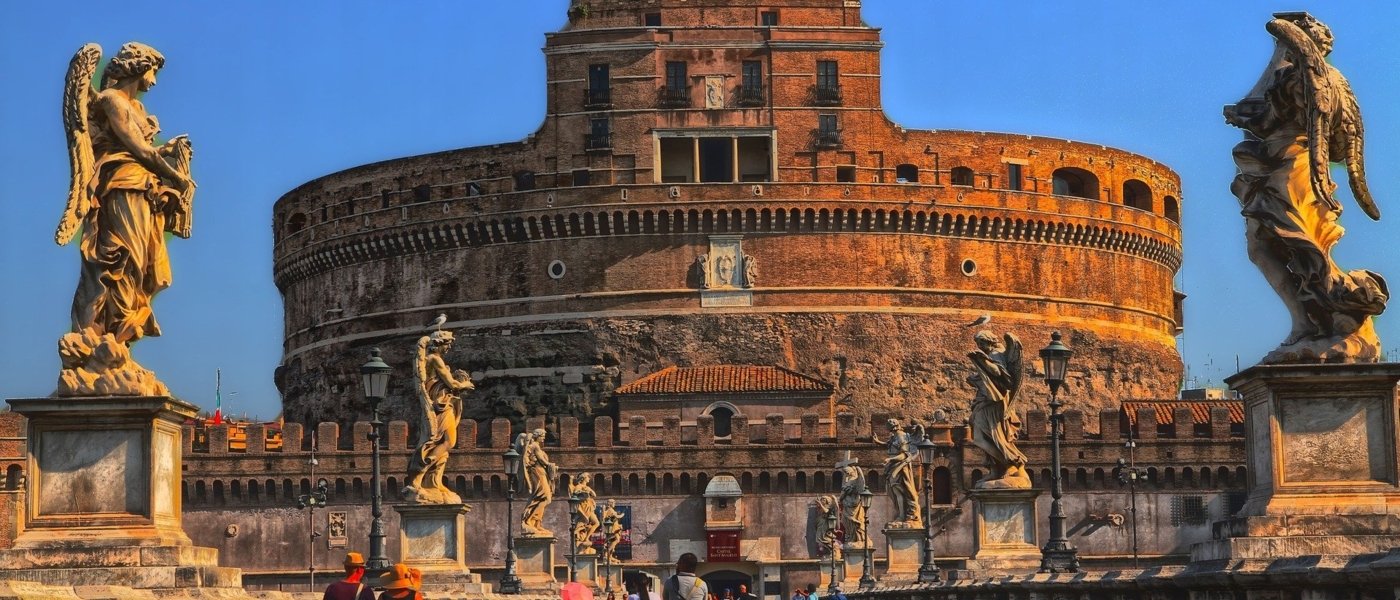Situated at higher altitude than Rome, the verdant hills and volcanic lakes of Lake Albano and Lake Nemi provide welcome respite from Rome’s suffocating summer heat. Lake Albano, within a steeply banked wooded crater, draws crowds of Romans in the summer to eat, drink and bathe in the lake. In ancient times, the area was centre of a cult to Diana, Goddess of the Hunt, Moon and Nature. Castel Gandolfo, one of the communes, is home to the Pope’s summer residence. You can take a mini guided train ride through the papal gardens of the Gardini di Villa Barberini if you fancy a glimpse of the Pope’s helipad.
The area boasts fertile volcanic soils and agriculture, including viticulture, has flourished here for millennia. The Castelli Romani is home to some of the most easily accessible historical vineyards near Rome.
Italy is known for its crisp, reductive white wines and plenty of this is quaffed in the restaurants and bars in Rome. Vineyards in the Castelli Romani area produce much of this both nowadays and in ancient times as there are no vineyards in Rome itself. The most famous wine produced in the vineyards near Rome is Frascati, a blend of Malvasia di Candia, Malvasia di Lazio, Grechetto, Bombino Bianco and Trebbiano. It gained DOC status in 1966, making it one of Italy’s first DOC wines; Frascati Superiore has now been promoted to DOCG. Many of these ‘Roman’ vineyards’ cellars also boast ancient caves. Historically, the region was also famed for its sweet late harvested wine Cannellino di Frascati DOCG which undergoes partial appassimento.
Named after the town it is produced in and around, Frascati is also a historical and artistic centre, famed for its villas built as status symbols by Popes, cardinals and Roman nobles from the sixteenth century onwards. You can also stroll the remains of ancient Tusculum, including a small amphitheatre and crumbling villa, perched on a hilltop a few kilometres outside Frascati.
Vineyards are found throughout the Castelli Romani, with seven more DOCs in the area – Colli Albani, Colli Lanuvini, Cori, Marino, Montecompatri, Velletri and Zagarolo. There is also a catch-all Castelli Romani DOC. The area is a prolific producer and accounts for 80% of all DOC wine in Lazio.
Marino is the closest to Rome of the Castelli Romani vineyards and is also well known for its dry white wine. The town hosts a grape festival on the first Sunday in October when the Fountain of Moors in the town centre spouts wine instead of water; the following weekend, you can indulge in doughnuts instead. Taking a tour of a Marino vineyard, Rome may be seen on the plain below, as it’s only a stone’s throw away. A little closer to the sea and with slightly different soils to its neighbour, the wines have greater concentration, intensity and body. Marino wines are excellent matched with the local speciality of artichokes.
Velletri is the largest town in the region, situated on the southern edge of the Castelli Romani. Wines from the cooperative here are good value. Seek out the Terre dei Volcsi Riserva in its strange shaped bottle; it’s jokingly nicknamed the ‘Andreotti’, after Italy’s former Prime Minister, the hunchbacked Giulio Andreotti. Visitors to the Roman vineyards of Velletri may be lucky enough to see some unusual vine training. Some producers still practice the ancient tradition used by the Romans and Etruscans of using a tree to support the vine shoots.
Whichever part of the green hills you wish to retreat to, at Wine Paths, our team of local experts can arrange exclusive visits and tours of the Castelli Romani and other vineyards near Rome.
If you're interested in one of our Italy Wine Tours, please visit this link.






